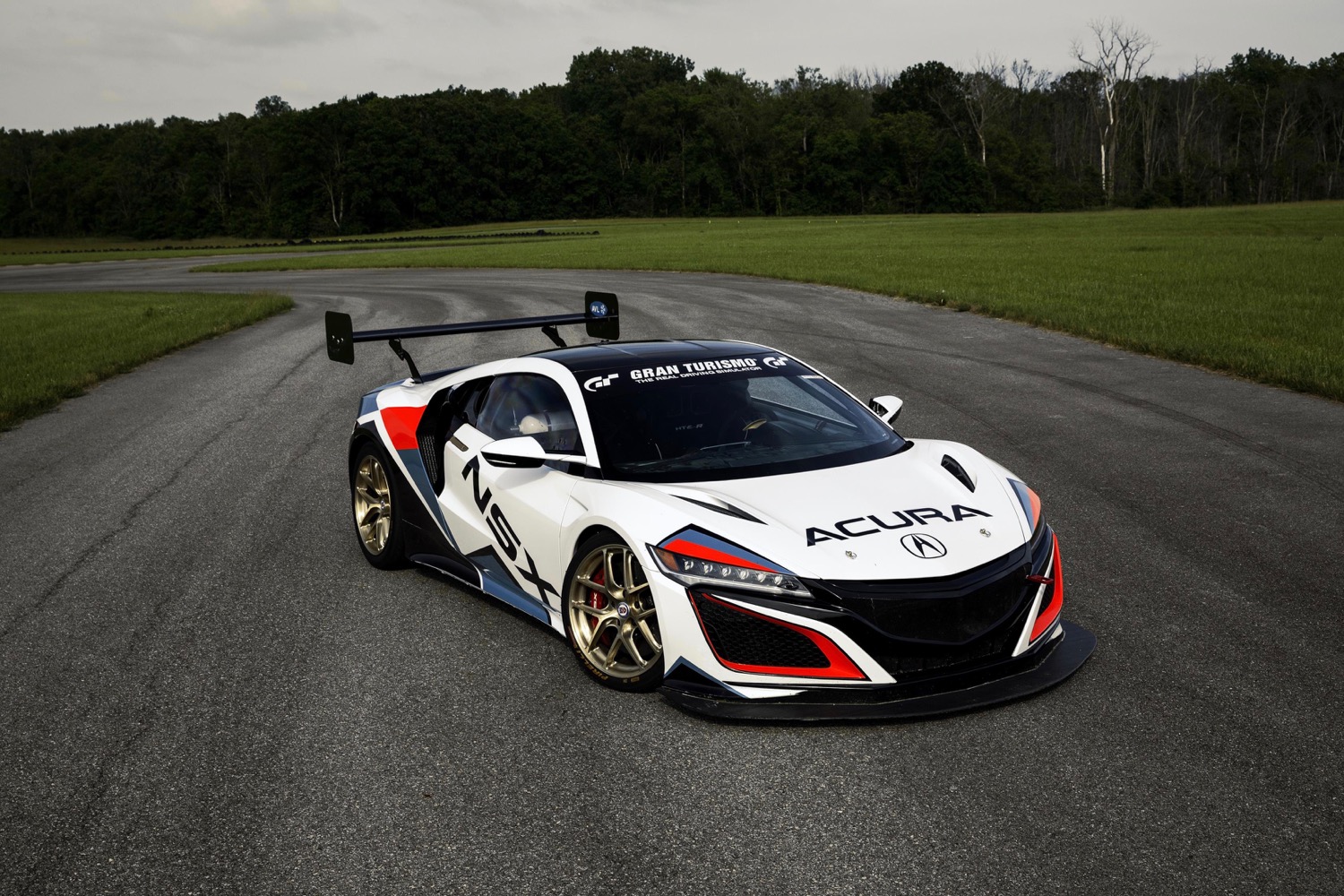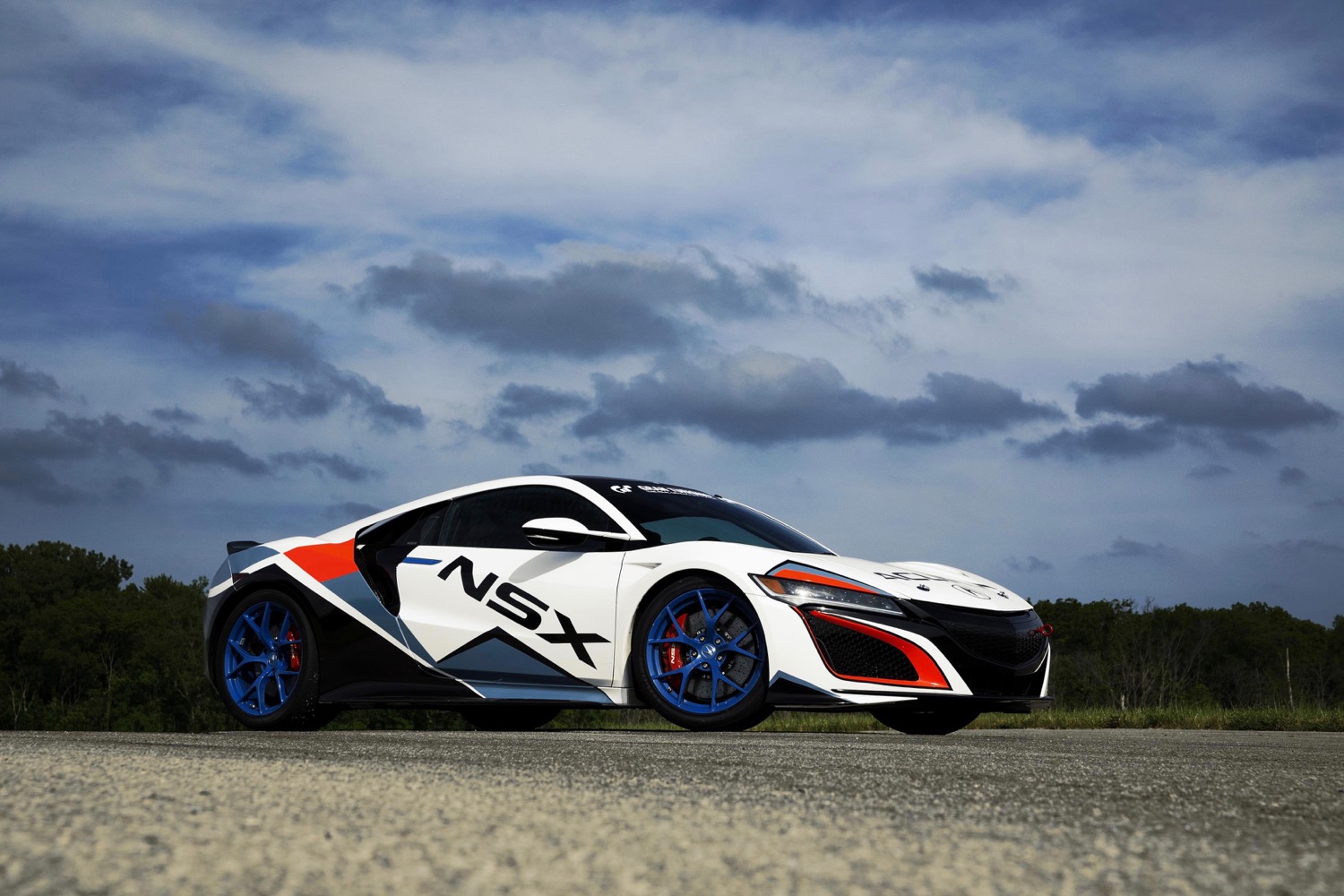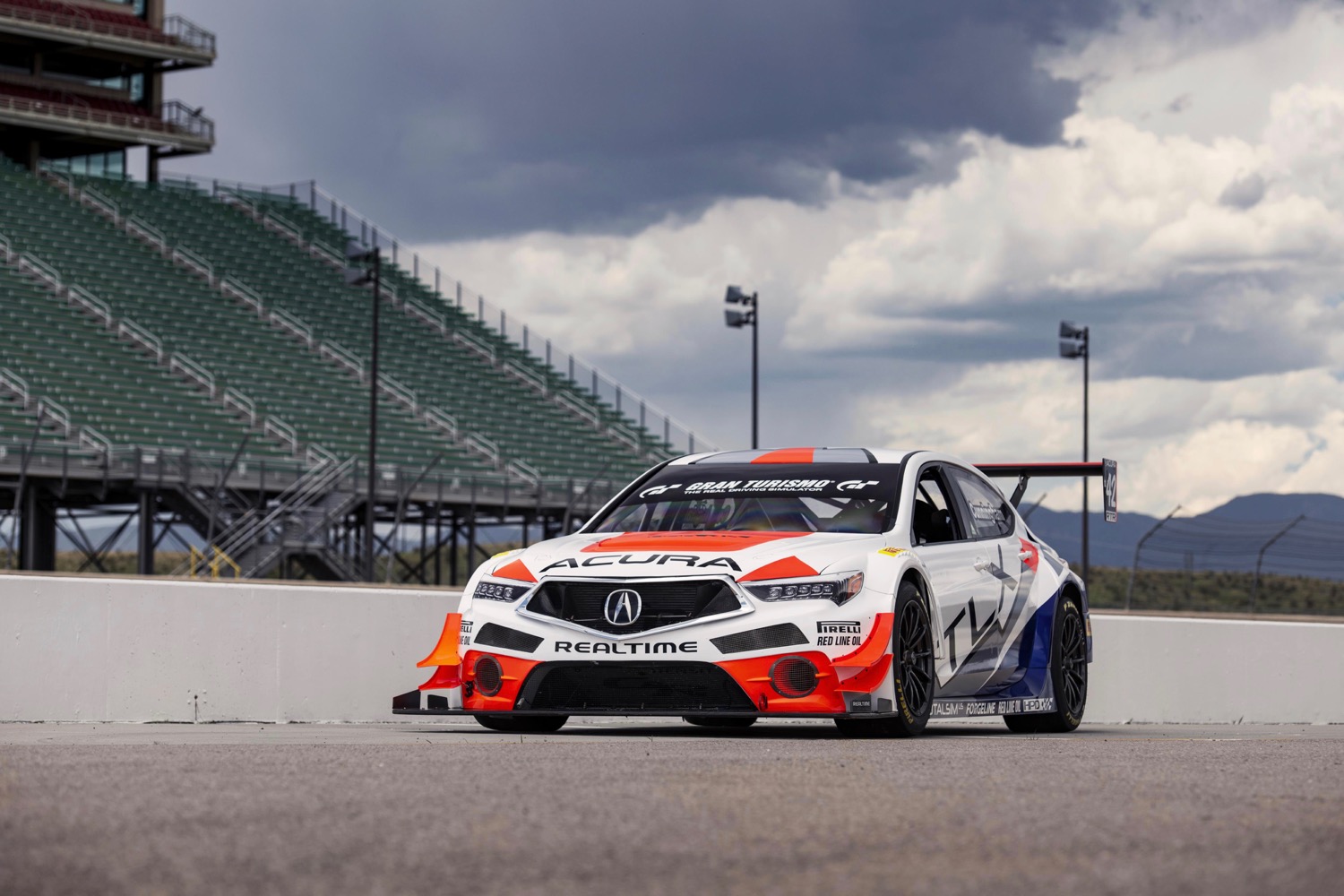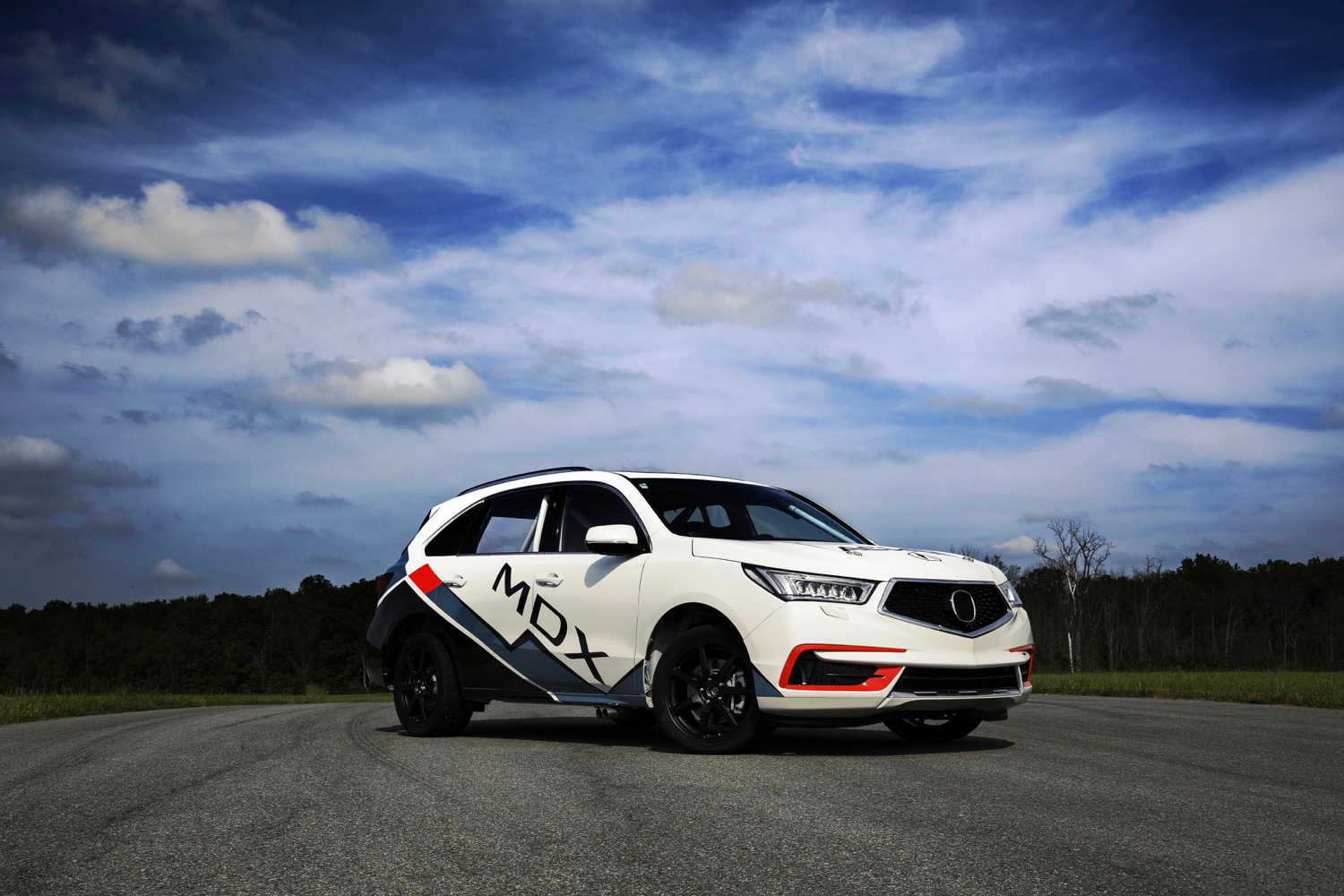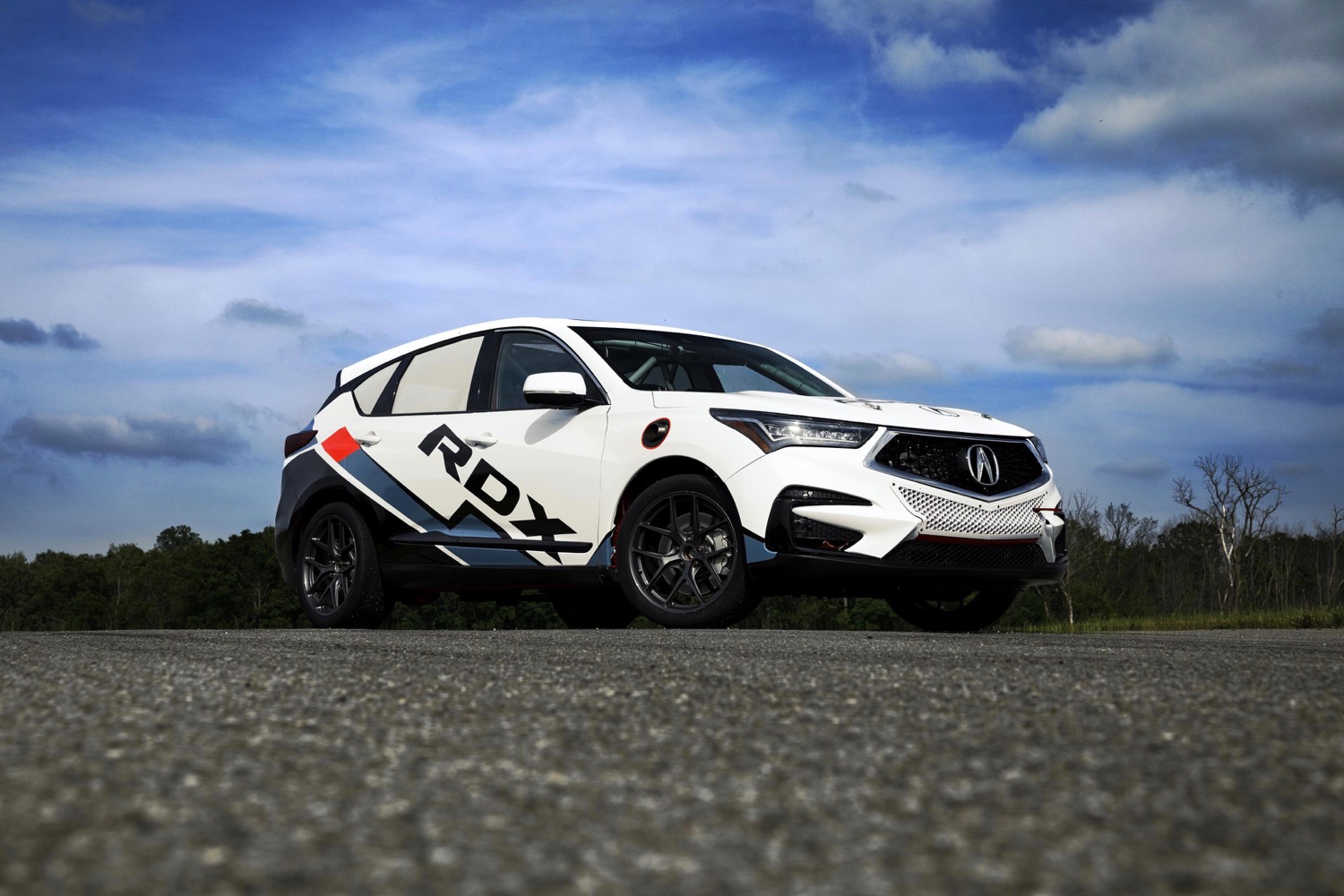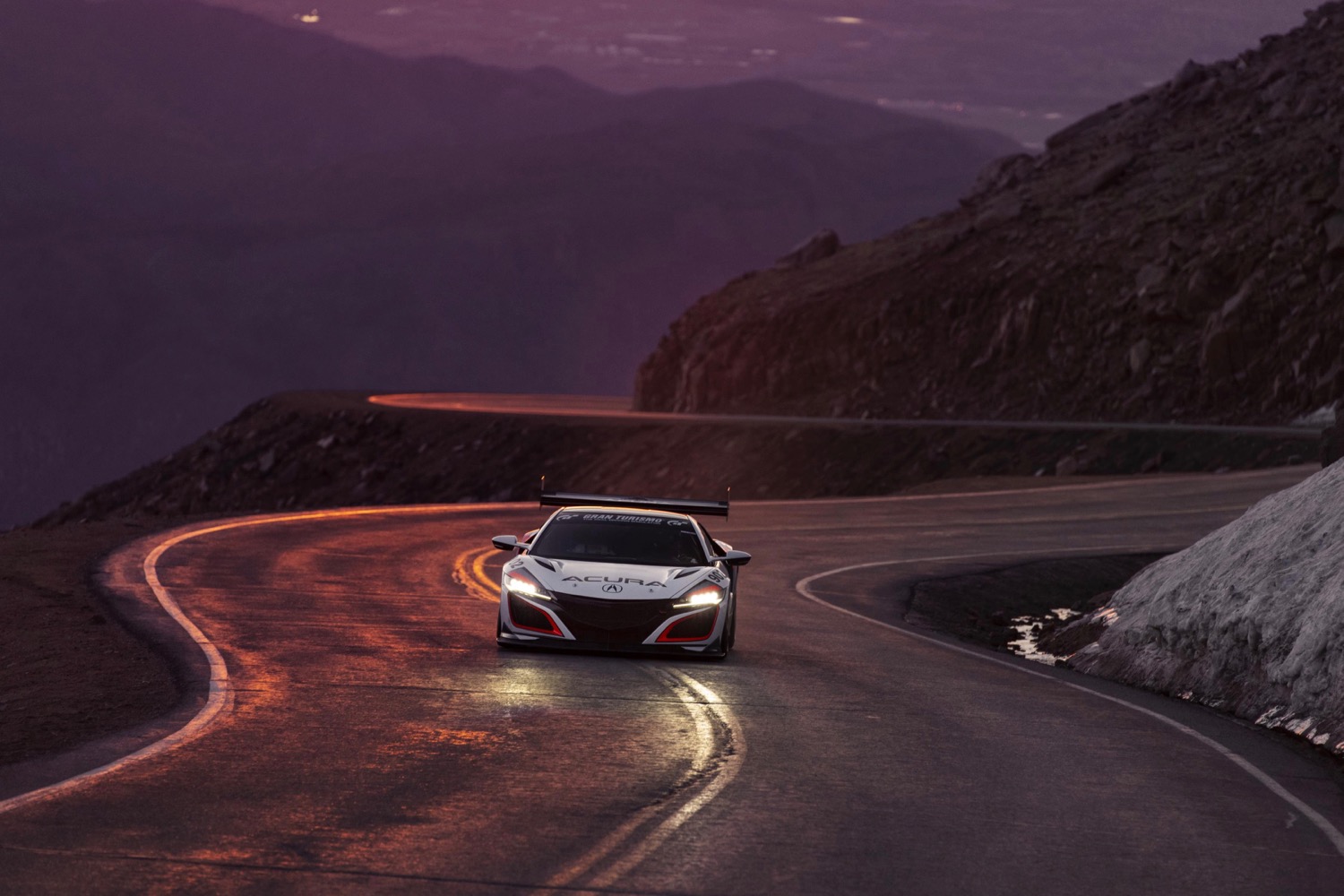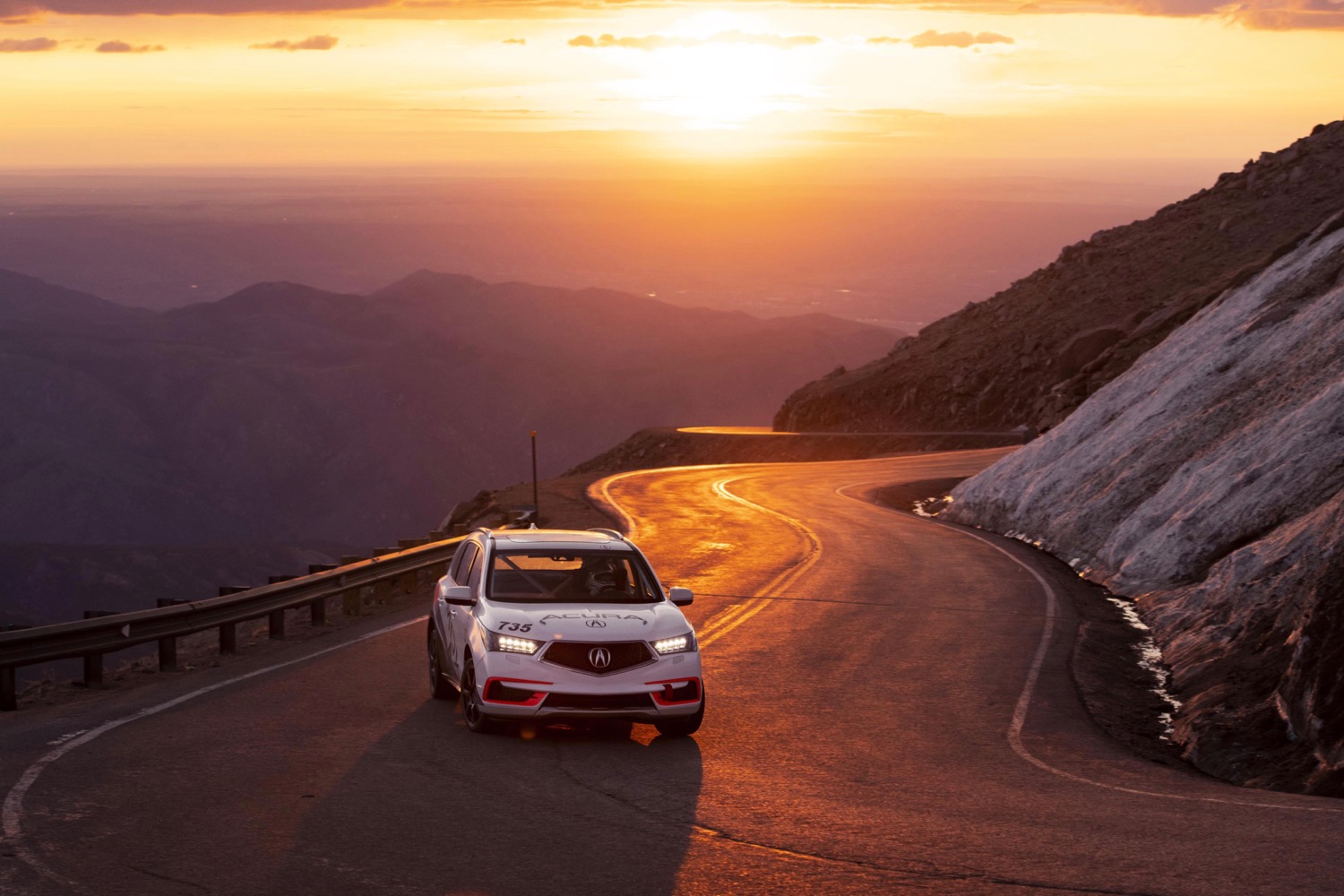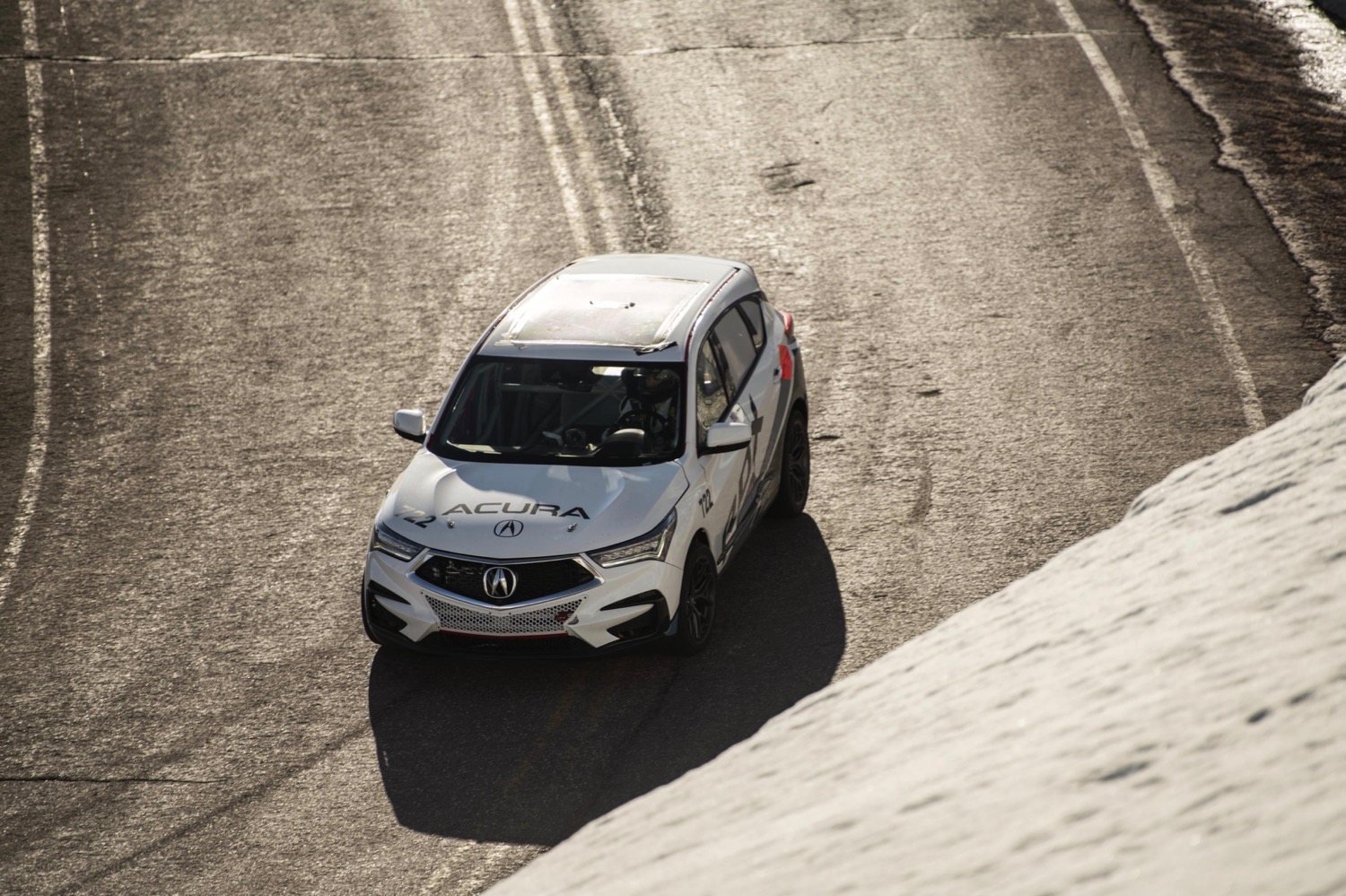Acura is heading to the 2019 Pikes Peak International Hill Climb with guns blazing. Honda’s luxury brand will field four cars driven and crewed by its own engineers. Professional race team RealTime Racing will also return to the legendary race, bringing the Acura count up to five. The goal is to collect as many trophies as possible.
Acura has become a regular at Pikes Peak, fielding entires over the past eight years. Taking competitors up to the 14,115-foot summit of Colorado’s Pikes Peak, the hill climb is one of the most challenging races in the world. A mistake on one of the dozens of corners could send a car flying off a cliff, while weather conditions can vary dramatically on the run to the top. Both drivers and cars also suffer the effects of oxygen deprivation due to the high altitude.
Four of the 2019 entries are based on production models, but that doesn’t mean they are all 100% stock. The 2019 MDX Sport Hybrid racer ditched the stock 3.0-liter V6 engine for a 3.5-liter V6 from the non-hybrid MDX, which in turn was bored out to 3.7 liters. Total system output now stands at 400 horsepower and 350 pound-feet of torque, compared for 321 hp and 289 lb-ft for the stock MDX Sport Hybrid. Most of the interior, including all seats except the driver’s was stripped out to save weight, and a roll cage was added for safety reasons.
The MDX’s little sibling, the RDX, will race at Pikes Peak as well. Acura started with a 2019 A-Spec model, retaining the stock 2.0-liter turbocharged four-cylinder engine, 10-speed automatic transmission, and Super Handling All-Wheel Drive (SH-AWD) system, which can shunt power around in all kinds of clever ways. But the racing version sports a larger turbo, as well as a 48-volt mild-hybrid system that feeds power to an electric supercharger. The result is 350 hp and 330 lb-ft of torque, up from the stock 272 hp and 280 lb-ft. As with the MDX, Acura gutted the interior and added a roll cage to the RDX. The smaller SUV also sports 19-inch HRE wheels with Pirelli tires, as well as upgraded brakes.
Acura will also bring two versions of its NSX hybrid supercar to Pikes Peak. One is stock with the exception of safety-related modifications required by the rules. The other is a modified “time attack” car that Acura claims is 200 pounds lighter than a stock NSX, but with output increased by 52 hp, for a total of 625 hp. The modified NSX also sports a massive rear wing and front splitter, designed to generate more downforce and help it stick to the road. The time attack and production-spec NSXs will be driven by brothers James Robinson and Nick Robinson, respectively. Both are Acura engineers and Pikes Peak veterans. Each set a class record in 2018. An NSX will also serve as the pace car for the 2019 race.
Acura engineers will drive and crew the MDX, RDX, and the two NSXs, but the fifth entry will be run by RealTime Racing, with veteran driver Peter Cunningham at the wheel. The TLX GT is a full-on race car loosely based on the Acura TLX sedan. It was originally designed for road racing, where it regularly went wheel to wheel with more exotic Ferraris and Porsches. Cunningham took the car to a class win at Pikes Peak in 2018.
Pikes Peak divides cars and motorcycles into numerous classes, giving it more variety than most other major racing events. Acura will compete in three classes in 2019. The NSX duo will run in Time Attack 1, the MDX and RDX will run in the Exhibition Class, and the TLX GT will run in the Open Class. That means Acura could collect three class records this year, although it likely won’t be able to match the overall record of 7 minutes, 57 seconds, set by the Volkswagen ID R electric car in 2018.

